Teacher burnout is so real it hurts, but there are ways to care for yourself and organize your life to avoid running on empty. In this episode, Cindy explores how teaching is impacted by purpose and joy. She shares her experiences from two vastly different schools, discusses how to prioritize your teaching responsibilities, and how you can avoid burnout.
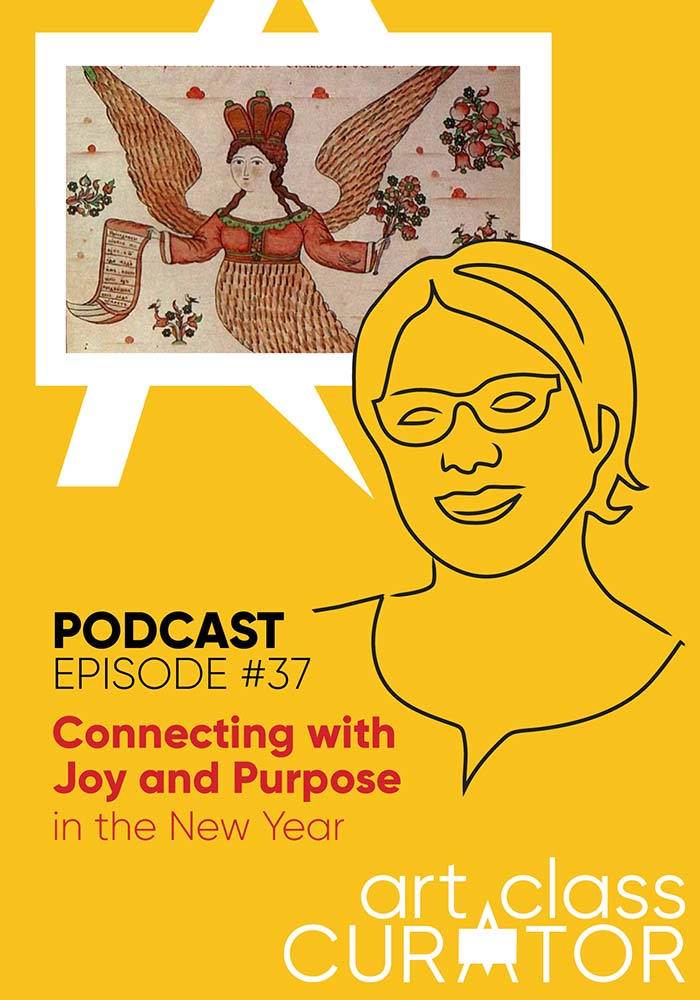
Hello and welcome to the Art Class Curator Podcast. I am Cindy Ingram, your host and the founder of Art Class Curator and the Curated Connections Library. We’re here to talk about teaching art with purpose and inspiration from the daily delight of creativity, to the messy mishaps that come with being a teacher. Whether you’re driving home from school or cleaning up your classroom for the 15th time today, take a second. Take a deep breath. Relax those shoulders, and let’s get started.
Hello everybody, it’s Cindy Ingram. Happy new year. I know I am publishing this just a few days before the new year of 2020 and, it’s a time of year to do a lot of reflection and looking back. And I know personally, 2019 was a year of tremendous, tremendous personal growth for me. So, it is something I am sitting back and thinking about, or reflecting on the last year, letting go of the old me and into the new. And I don’t ever set any new year’s resolutions, but I am spending some time trying to integrate all of the learnings from the last year. And thinking about how I’m going to embrace those moving forward into the new year. And one of the things I spent a good amount of time thinking about in this last year, and in the the membership, the Curated Connections Library by Art Class Curator, we have a course in there called Creating Curated Connections. And it is all about sort of the foundational system that you need to be able to lead and create the life that you want.
And so if you want to have a Curated Connections Classroom, one that’s full of conversation and discussion and excitement and joy and energy, that it’s not about just finding the right lesson, it’s about going deeper than that. And so in the Creating Curated Connections course, we talk about that there’s this iceberg that is all below a really positive learning environment for your students. So you have this classroom that’s full of energy and excitement and joy, curiosity, diversity, acceptance, kids who are really connecting to art, and conversations that are hard but invigorating. To get there, that is more than just downloading a lesson. That or creating a lesson, that there’s a foundational thing.
So one of the very first levels of this foundation that we discuss in this course in the membership, is this idea of what’s your purpose? Why are you doing what you’re doing? And we know that teaching is one of the hardest things ever that you can do and that it is one of the most stressful jobs that you can have. I’m not citing any statistics on that, it’s just I’ve lived it. I know. It’s really, really stressful. But studies have shown that 35% of teachers leave the profession during the first year. And then by the end of the fifth year that 50% of teachers have left the field. Now those statistics come from the Wisconsin Education Association Council, and it’s not surprising at all. That that sounds kind of right. It’s a really, really hard job.
We have a lot of unique challenges. Hundreds of students instead of a few classes worth. We don’t have a lot of curriculum support, financial support. We don’t have a lot of social support. Often the art teacher’s the only one in the school. And the fact that we are the only really creative outlet for a lot of the students, and so a lot of the students come to us with emotions, big emotions. Especially if you’re a middle school teacher, you know that it’s all emotions all day. And, it’s survival mode. You start out the year sort of fresh and excited, and then you hit in October and, you just get completely drained. And then, it goes up and down.
There’s this chart from the Wisconsin Education Association Council that has that. It’s like, your mood is great at the beginning of the year. It drops when you start hitting the stress of October. You hit November, December, January, and it’s just rough. It’s the lowest part of the graph. And then you start to rejuvenate yourself into January, February. It has April and may pretty high up. I honestly would probably disagree with that. It gets pretty rough at the end of the year too. But, it’s rough. And I had been thinking a lot about, well how do we thrive in this situation where it’s so rough? Because, we deserve better than that. We deserve to live lives that are not stressful. That we can thrive in. That we’re not crying on the way to school.
I had a job, my very first teaching job, I cried on the way to school. I cried on the way back. It was miserable. And I was thinking, well, what would make it better? So, I’m thinking of two of my teaching jobs. One of them was miserable. Like I said, I cried. I didn’t have any anyone to talk to. I was in an isolated, in a portable, with only one other teacher was in a portable. Kids are being taken to me in and out all day long, it was elementary, but I didn’t have any sort of social outlet with adults. And all the adults there were not very friendly to me. And so I did not make a lot of personal connections to them. Mainly probably was, I was new and terrified. And also, there was no time for that at that school. And it was just that everybody at that school, there was a profound lack of joy. And joy is one of my core values. And so having a, a situation where joy is gone, was very, very hard. I only lasted two years there before I had to leave.
And contrast that with my last teaching job, which was a charter school teaching sixth, seventh, eighth and ninth grade. And it was the weirdest place ever. It was a charter school, like I said, they were all portables outside of a church. They followed a classical curriculum and I kind of went away from that and did more diverse things, as you know I’m prone to do. But, everybody there, all the teaching staff were very new teachers. A lot of them were very fresh. But everybody there had this profound love of learning. A profound love of teaching, and a profound love of the content they were teaching.
And even though the school was ridiculous [laughs]… no, it was these portables with not a lot of resources, everybody there was so joyful. And it was so fun to work there. Even when my mom, I was talking to her at the end of the school year and I was quitting to work on Art Class Curator, and she was like, “I’ve never seen anyone so happy as I’ve seen you at this school.” And that’s what it was like. It was rough, don’t get me wrong. Like there were days that were absolutely horrible. There were days where I was hitting a breaking point. When someone would ask me to paint a sign and I would just break into tears because I was running a business and teaching at the same time. But, it was joyful and it was wonderful.
And I’ve thought about, what is it that made that place so different then the other school? It was just night and day different. Even the kids, they didn’t have any different behavior. They were still pretty rough kids. Both of them were in really low-income areas. But, the kids loved it there too. Everybody, even if they didn’t love it, they loved to hate it and loved their teachers. So it was really interesting. But I think what makes that place so different, and what makes us teachers so joyful, and that made the environment so joyful, is that everybody was very firmly connected with why they’re there. They were there to make a difference on kids’ lives. They were there to impart this knowledge on them. And they were there to really connect the students to a love of learning. Because it was a classical school and most of the teachers there were classically educated. So they were very deeply connected with that.
And, I really feel it’s very important to stay in touch with why you do it. And that’s even true for running my business, with Art Class Curator. There are times when I get totally burnt out. It happened last January. Well it’s happened a couple times just in 2019. Like I said, I did a lot of growing in 2019. But after we opened the membership in January, or it was February last year, I just fell into a really deep funk. I just, I couldn’t work. I was totally burned out. It was feeling really heavy and hard. And it wasn’t until I kind of pulled myself out and I went to NAEA, and I’m kind of tearing up when I talk about it because it really was profound. And I did some presentations there.
I did three presentations in NAEA in, where was that at? It wasn’t Seattle, was it? Well that was the year before. Boston. It was Boston. So anyway, I did, that’s neither here nor there, so I did presentations there and I also usually do a sort of cocktail hour/happy hour thing for Art Class Curator readers. And I got to be with my people. I got to be with other teachers. I got to connect with everybody again. I got to have these conversations in-person. I got to teach live in-person, because I do desperately miss teaching live, in-person sometimes. I don’t miss any of the burnout of being a teacher or the the work or the all of that, but I miss the teaching part of it.
And so, it was me reconnecting with my why. Reconnecting with the people that I help. Hearing stories about lessons that they’ve done and different things like that. And I was able to sort of pull my way out of that funk by reconnecting with the reason why I do it. So I think, that might seem like a really simple thing. It might seem like, oh, of course I know why I’m doing it. But are you truly, really connected with why you’re doing it? So when we get real about why what we do matters, your whole perspective can shift. So if you prioritize what matters to you, you become a better teacher for your students. And your life is more, is more balanced.
And if you think about it, you’ve got, your day. You rush out of the house because you cannot be late as a teacher. You might have little kids at home, you have to get them to school, you have to get them fed and dressed. Have to get yourself fed, showered, dressed, fed, all of those. I said fed many times, I think I’m hungry. But, you have to do all that in the morning. You get there, and you usually get swept right away. Because if you’re like me, you show up the minute you need to be there and then you’re just swept right away into responsibility. You don’t stop. You don’t stop to pee. You don’t stop to eat. You just go-go-go all day long.
And then, you’ve got all these kids in your face and all of their emotions. And you’ve got administrators, and you’ve got other teachers, and you’ve got people complaining about their jobs. You’ve got all of that you’re dealing with every day. I don’t mean to make you have a panic attack here just talking about it. But when you’re firmly rooted in why you’re doing what you’re doing, that stuff becomes just a little bit easier. When your classroom is just a total mess. And when you are bogged down with grading, or your administrator is making you do something ridiculous. And you have another meeting to go to, you could stop and think why am I even doing this? And get connected to that greater cause. And that will hopefully help you rejuvenate a little bit.
And what I want you to think about doing, is to document your why … and make a poster. Okay? I’m going to give you an art project here. It can be as simple as taking an artwork. What I did is, is I took an artwork that I like, it’s colorful, I use it a lot in my website, and I typed in my teacher why over the top in white and I have it. It’s, distill your message, your why, down into one line. Put it over an image. You can make a nice artwork out of it. And then hang it up. And when you’re feeling down, and when you’re feeling overwhelmed, look at it. Make it a background on your phone. Put it up on your screen, on your computer at school, so that you can remind yourself of why you’re doing what you’re doing. And it will also help you filter all of those things.
Like when someone asks you to make a poster for the Valentine’s Day dance. Or they ask your kids to make one. You can look at your teacher why and say, “Is making a poster for this Valentine’s dance in alignment with my teacher why? Why I’m here? Or is that going to take away from my why? Add more stress? And add more burden? And not actually advance my students and make those art connections that they want to make? So you can use that as a reason. And you can point to your teacher why when that person asks you, “You know what, that does not fit with my curriculum. It does not fit with why I’m here on this planet. Why I’m here in this job. I am here to make a difference through art and I am going to have to say no to that.”
It gives you clarity about what matters to you. But honestly it’s useless if you ignore it or you don’t set boundaries around that. So, be true to yourself. Be true to your values. And that’s how you’re going to avoid teacher burnout. And that’s how you can serve your students at a higher level, because it just gives you a different perspective through which to look at your job and what you’re doing.
So, I encourage you to do that as you’re starting this new this new year. And hopefully it gives you a little bit of a rejuvenation for the coming year. And if you’re interested in diving deeper into this type of content, we do have in the membership, the Curated Connections Library, we do have a course called Creating Curated Connections. And we go through this framework of this foundation to get there, before you ever have the lesson in your hand. And it includes your teacher identity, your purpose, your limiting beliefs, your values, your capabilities, your behaviors. All of this to help us get to a point where our classrooms are joyful, creative, connected places. What we call a curated connection.
So, join us in the membership. We are opening the doors in just a few days. On January the 2nd, the doors are open for the membership and they will be open from January 2nd to January 7th. So we would love to welcome you in. You can go to artclasscurator.com/join to check it out. If you’re already a member, just go into your courses area and you will find that course to check it out.
All right. Well thank you guys so very much for listening. Happy new year. I wish this year for you is full of joy. And hopefully by creating your teacher why poster, you can add a little bit more joy into your day-to-day life. All right. Thanks so much. Bye.
Thank you so much for listening to the Art Class Curator Podcast. Help more art teachers find us by reviewing the podcast and recommending it to a friend. Get more inspiration for teaching art with purpose by subscribing to our newsletter, Your Weekly Art Break. Recent topics include the importance of seeing art in-person, famous and should-be-famous women artists, and 21 days of art from around the world. Subscribe at artclasscurator.com/artbreak to receive six free art appreciation worksheets.
This week’s art quote is from Thomas Merton . He says, “Art enables us to find ourselves and lose ourselves at the same time.” Thanks so much for listening. Have a wonderful week.
Thanks for listening! Have an idea for an episode topic or think you may be a great guest for the show? Click here to send us an email telling us about it.
Subscribe and Review in iTunes
Have you subscribed to the podcast? I don’t want you to miss an episode and we have a lot of good topics and guests coming up! Click here to subscribe on iTunes!
If you are feeling extra kind, I would LOVE it if you left us a review on iTunes too! These reviews help others find the podcast and I truly love reading your feedback. You can click here to review and select “Write a Review” and let me know what you love best about the podcast!


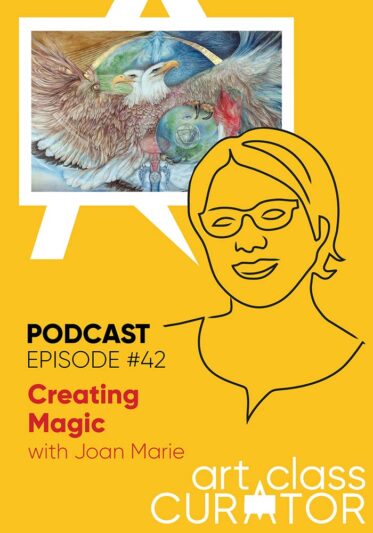
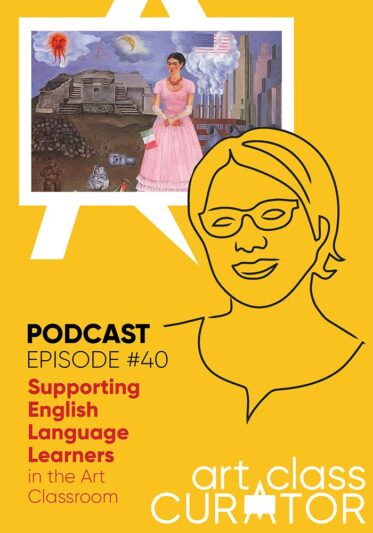
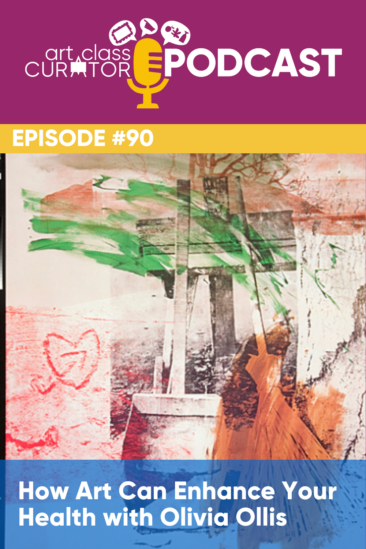
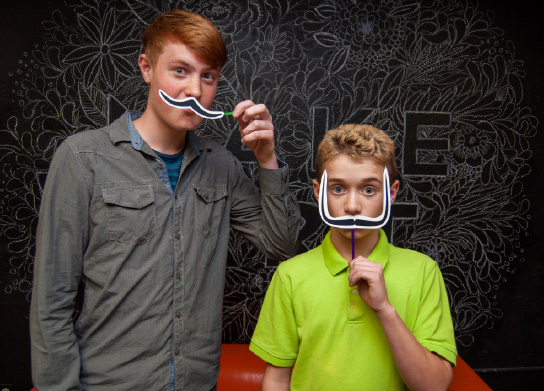
Leave a Comment